Rust on cucumber leaves
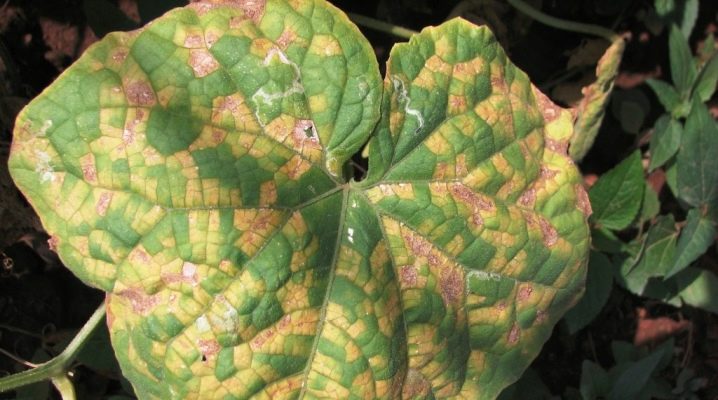
Rust on cucumber leaves is one of the common problems that gardeners face. It is worth considering the main reasons for such a nuisance, as well as figuring out what to do to destroy it.
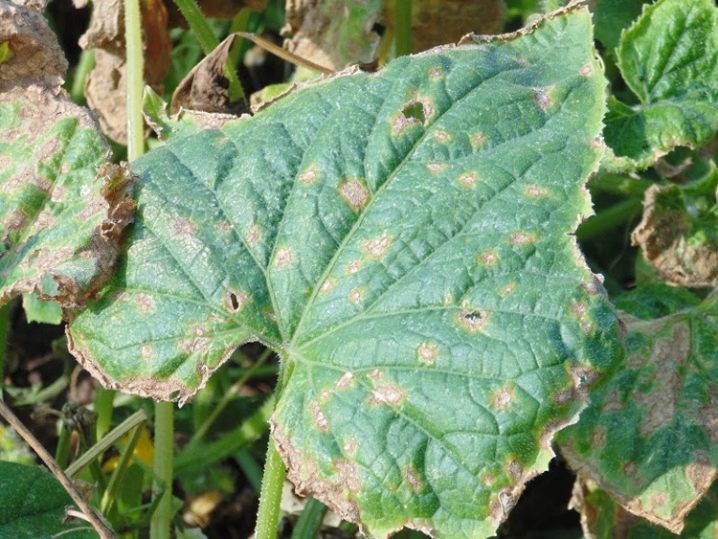
Why did it appear?
The homeland of cucumbers is tropical forests, which are characterized by a humid and warm climate. Therefore, it is necessary to take into account the conditions for growing the culture so that it does not get sick and does not die. Even minimal disturbances can cause the development of various problems, one of which is rust on the leaves when grown outdoors.

Gardeners identify several reasons for the formation of rust.
-
Fungal diseases. These include anthracnose, peronosporosis, ascochitis and other types of fungi that can lead to a change in the shade of the leaf plates.
-
Sunburn. The most unfavorable factor is that it is often the main reason for the appearance of dark spots on cucumber leaves, which gradually begin to grow. Over time, the plant is able to cope with the problem on its own and continue its normal development. However, if the leaves are completely burnt, they cannot be processed and restored.
-
Improper care. It is also a fairly common reason, which can be detected by the way the leaves are covered with dark spots. Leaves are likely to die.
-
Continuous rains. They lead to an increase in humidity, due to which the immunity of cucumbers decreases markedly, and the risk of developing various diseases increases.

Spots on the leaves of cucumbers appear with fungal and bacterial diseases. To start treating a cucumber, you should first make sure that there is a problem.
Signs of the disease
Determining the presence of rust is not as difficult as it might seem at first glance.
-
Black rot. In this case, the leaves are covered with dots of reddish color and are deformed, gradually changing shape and curling. Over time, if left untreated, stains completely cover the surface, and a sticky liquid begins to appear on the damaged areas.
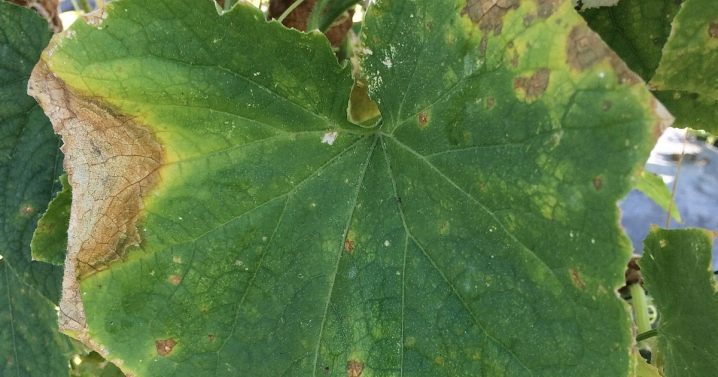
- Anthracnose. The disease occurs at elevated temperatures or humidity, when a large amount of moisture or condensation settles on the surface of the leaves. The leaves begin to become covered with yellow spots, which are characterized by a regular round shape.
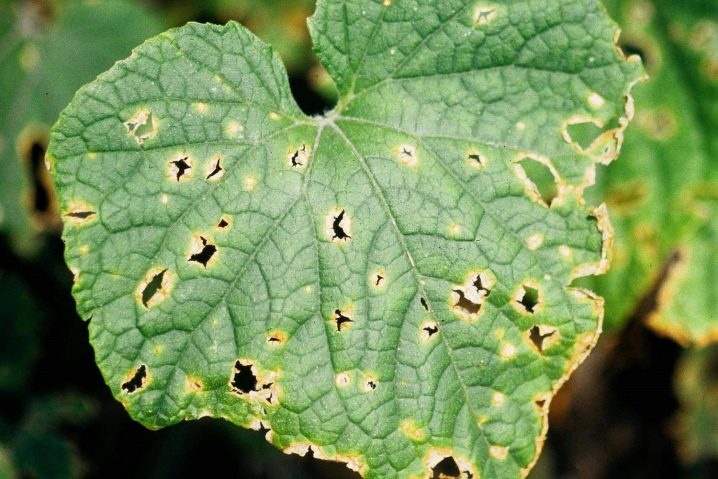
- Peronosporosis. On the leaves and stems of the plant, small spots of a bright yellow hue are formed, which gradually increase and become more saturated, changing the color to reddish. Over time, if the crop is not sprayed on time, it will dry out and die.
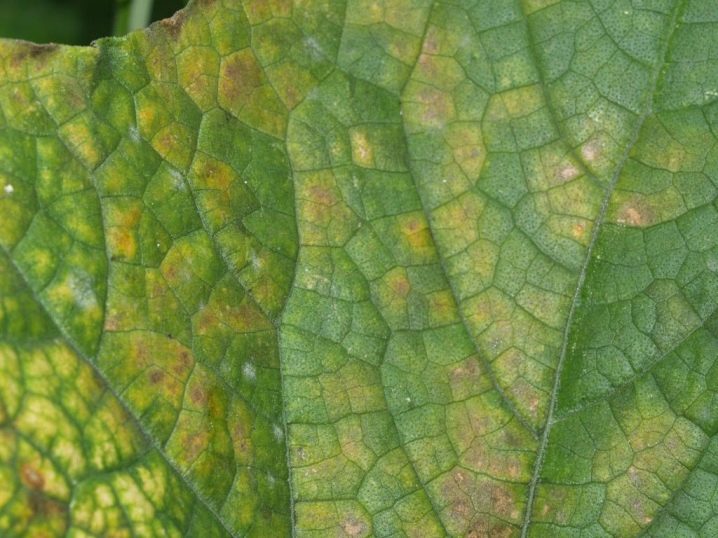
- Corner spotting. It is characterized by a greasy green bloom that covers the leaves. Over time, it acquires a reddish tint, breaks and forms holes in the leaf plates. In the absence of any measures to eliminate the disease, it passes to the fruit and gradually destroys the plant.
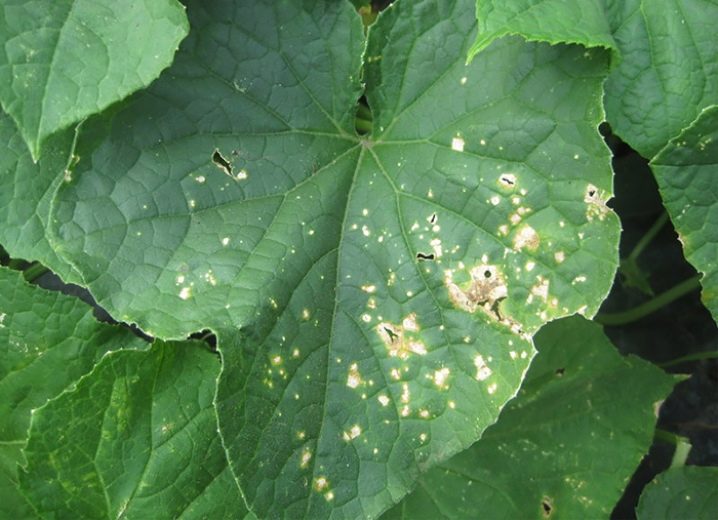
- Mosaic. The peculiarity of the disease is rusty spots in the shape of a star, which begin to attack the cucumbers from the leaves, and then move to the stems and fruits. The spots quickly increase in size, which leads to the drying of the leaf plates and their further death.

- Melon aphid. A clear sign of her attack is a rusty spot that appears on the cucumber leaf. And also the plates quickly begin to deform and twist, then fall off.
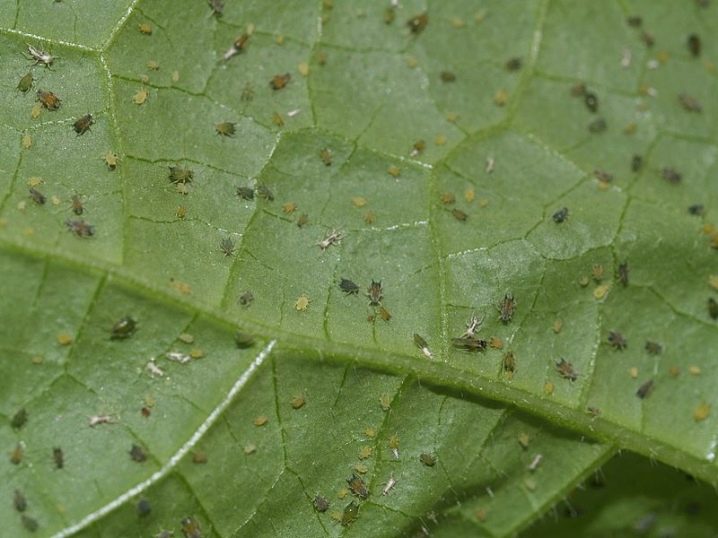
- Spider mite. The parasite is also able to bring with it rust, which settles on the back of the leaf.In addition to rusty spots, white cobwebs can also be found on the elements of the plant.
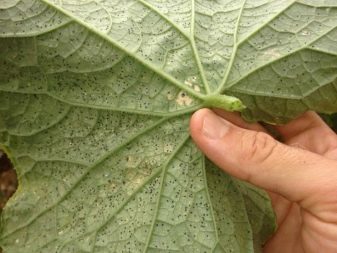
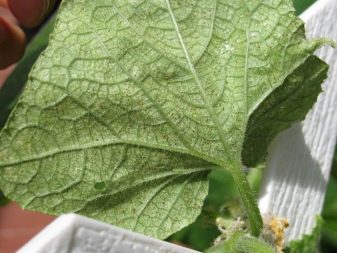
Any sign of rust indicates that cucumbers need treatment.
How to treat?
Rust damage to cucumbers requires immediate treatment. If the disease is caused by a fungus, gardeners at home recommend using a number of drugs.
-
Bordeaux liquid in the form of a solution with a concentration of 1%. The tool is mainly used for preventive treatment, which is carried out in the spring or early June. On average, it is recommended to process cucumbers up to 4 times per season. The product can be purchased at a specialized store.
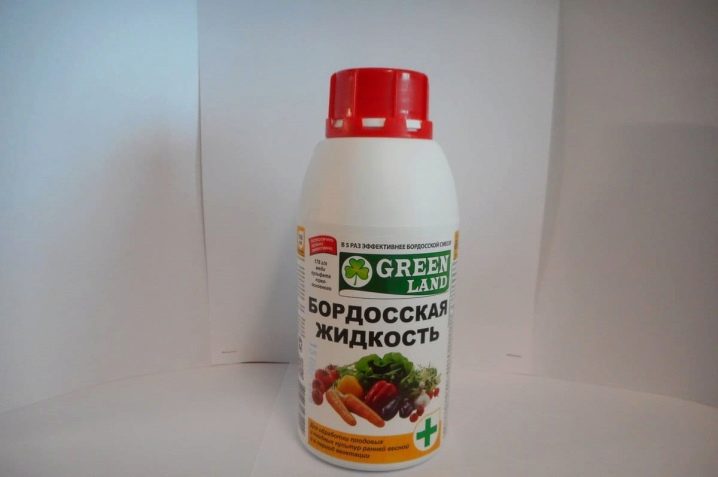
- "Oxyhom". For spraying cucumbers, 20 g of the drug dissolved in warm water is enough. The resulting solution is used to treat rust-affected plant lashes.
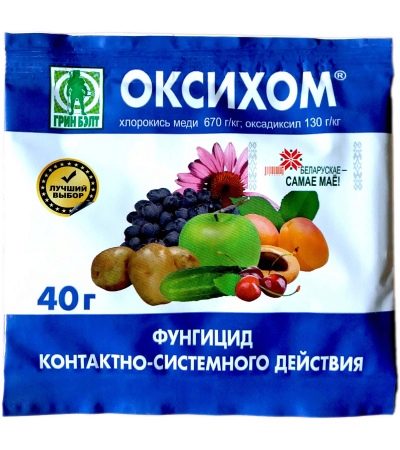
- "Arcerid". It is a fairly effective product aimed at removing rust. Gardeners note that it is possible to get rid of the problem in the early stages even after a single treatment of the leaves.

- Fitosporin. The tool attracts with its low cost and effective composition. With the help of a simple concentrate in the form of a solution, it will be possible to prevent the development of a fungal infection.
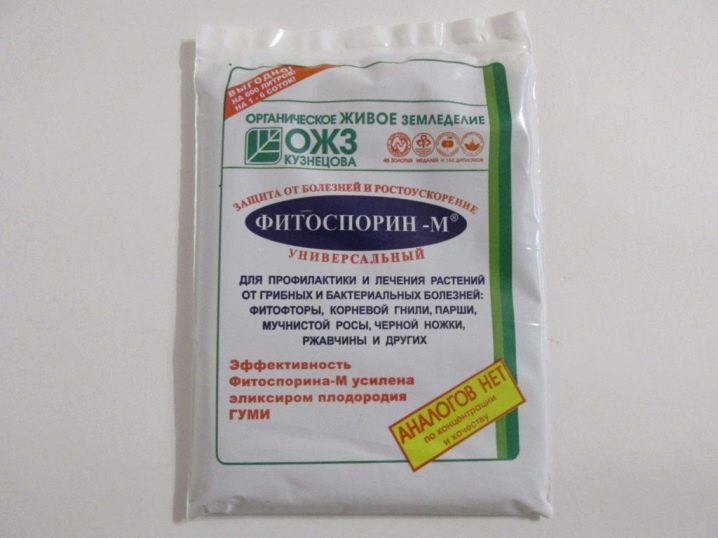
- Benomil. The remedy is aimed at combating anthracnose, a fungus that often infects cucumbers. Before using the drug, it is recommended to carefully study the instructions.

- "Formalin". Mostly used to combat mosaics. The drug is used in the form of a low concentration solution mixed with water. Processing is carried out in the spring season, before the flowering of the culture. The tool quickly copes with the task at hand - it eliminates the disease and restores the plant's immunity.
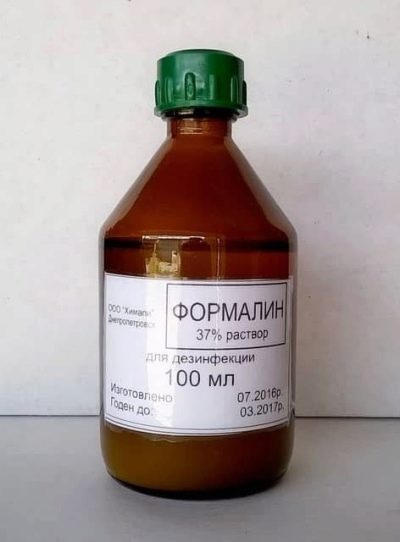
Before fighting, you need to carefully examine the plant and trim the affected areas that cannot be restored. Otherwise, the disease will return immediately after treatment and continue to develop.
In pest control, it is better to use drugs such as:
-
"Spark";
-
Inta-Vir;
-
Fitoverm;
-
Akarin;
-
Apollo.
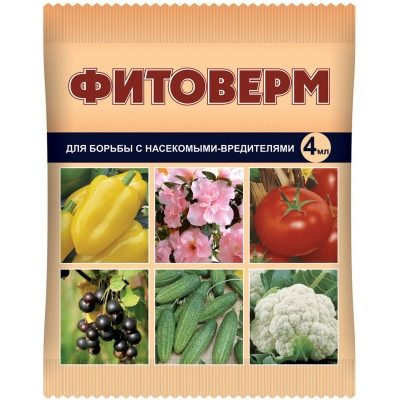
The products effectively eliminate insects and prevent the development of disease. The drugs have a high concentration, so they must be diluted in accordance with the instructions.
Finally, the fight against rust can be organized by using folk remedies.
-
Milk serum. To prepare an effective solution, stir 1 liter of dairy product in a bucket of water, and then process cucumbers and crops nearby. For small areas, the serum can be used without dilution.
-
Ash solution. Prevents the spread of rust throughout the plant. For processing, wood ash is mixed in an amount of 200 g with boiling water (2 l). The finished solution is infused for 2 days, then a small amount of crushed laundry soap is added to the mixture. Seedlings and adult trees are treated with a ready-made solution for a week, spraying the bushes three times. If the leaves are severely affected, the cucumbers are sprayed 6 times a week.
-
Onion solution. The product perfectly removes anthracnose, preventing rust from developing to the level of destroying the plant. You can prepare a solution from 50 g of onion husks, filled with 10 liters of water. After the mixture is boiled and insisted for a week. Processing requires the use of 1 liter of solution per 1 bush.
-
Manganese solution. An excellent solution for the treatment of blackleg infested cucumbers. Before use, manganese is added to a volumetric container with water, after which they begin to water the plants.
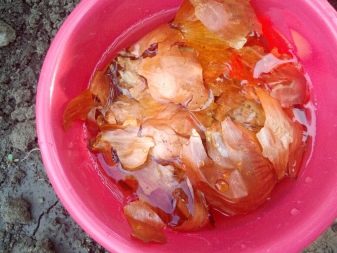

You can also cope with a spider mite with the help of folk remedies. Popular options.
-
Potato tops. It is enough to take 1 kg of tops and immerse them in a bucket of water. Then it will remain to insist the liquid for 4 hours. The ready-made solution can be used to process the leaves of the plant.
-
Marigold. It is necessary to take no more than 5 kg of pre-dried flowers, pour boiling water over them in a volume of 10 liters and insist for 14 days. At the end, 40 g of laundry soap is added to the tincture, after which the cucumbers are processed.
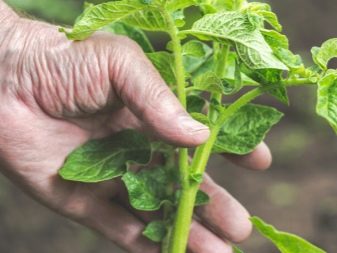
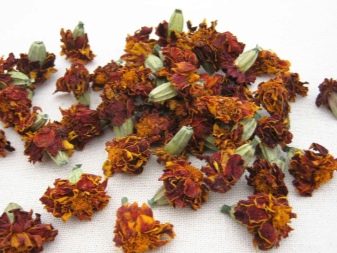
It is possible to cure rust, and prevent the death of crops and plants, if you use proven means.
Prevention measures
Rust is a loud signal from a plant that a serious disease is present. In order not to bring to such a state, it is necessary to take preventive measures for cucumbers.
-
The best solution would be to plant a crop in a greenhouse, in which the soil is fertilized with humus and peat.
-
Water the plant with warm water.
-
It is important to monitor the humidity in the greenhouse. The indicator should not be above average.
-
Overheating and waterlogging of cucumbers should be avoided. For this, it is recommended to regularly monitor the microclimate in the greenhouse.
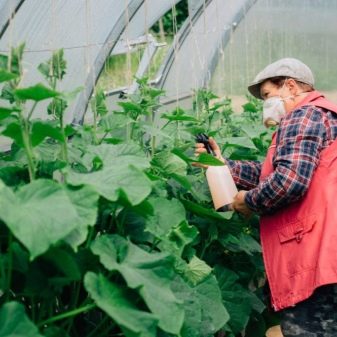

When the first signs of rust appear, it is necessary to add soil to the stems in order to strengthen the plant's immunity by forming new roots.












The comment was sent successfully.